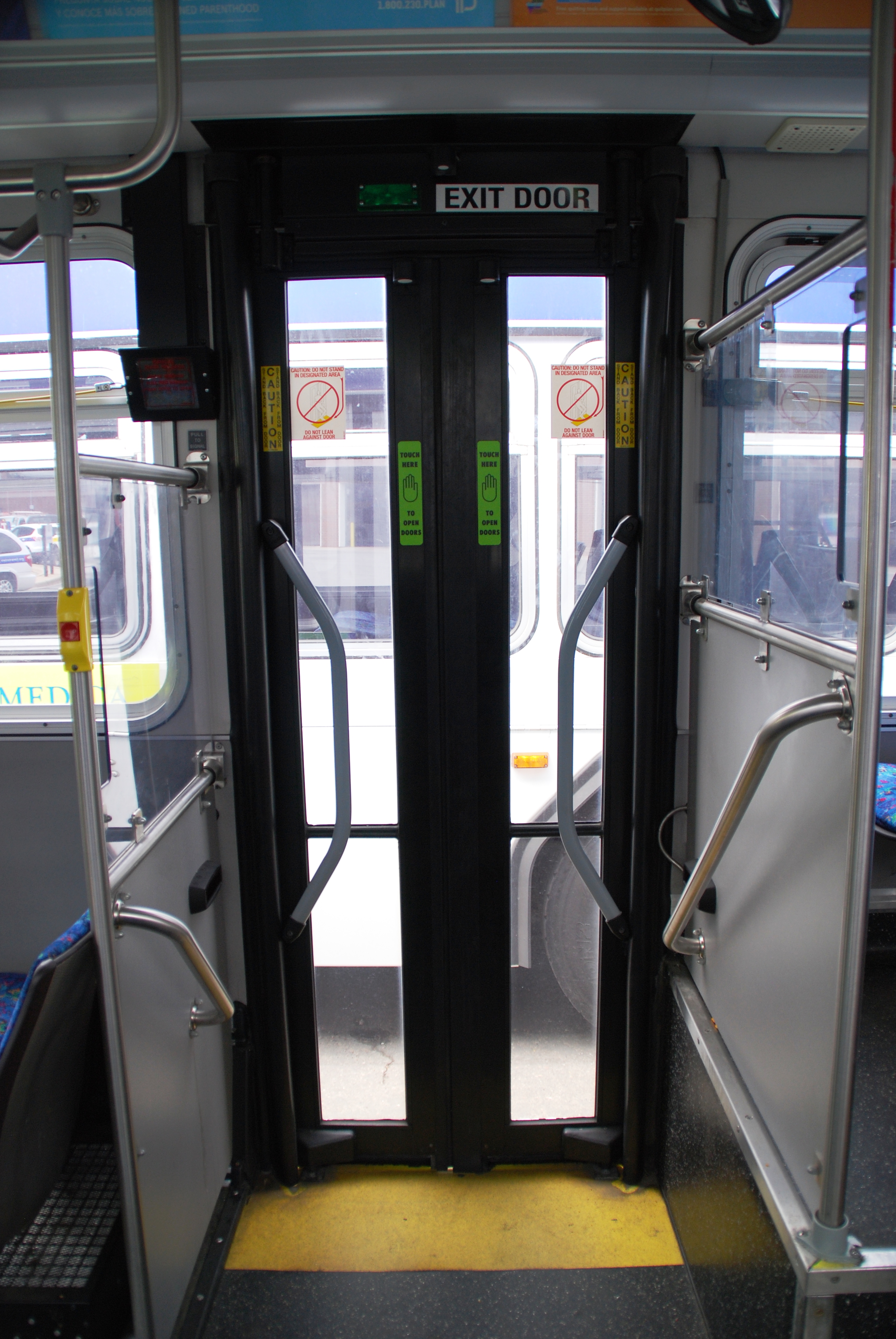 In most cases, Metro Transit encourages bus passengers to exit through the rear door so boarding customers can get on quickly. But customers who use the rear exit often wonder why the doors don’t always immediately open.
In most cases, Metro Transit encourages bus passengers to exit through the rear door so boarding customers can get on quickly. But customers who use the rear exit often wonder why the doors don’t always immediately open.
For safety reasons, the rear doors are locked when a bus is in motion. Keeping the doors locked also prevents them from being unnecessarily opened at bus stops where no one is exiting, which helps control the interior temperature on the bus. (Doors on light-rail trains are kept shut until a customer presses the open button for the same reason.)
At bus stops, operators are instructed to open the front door and to unlock the rear exits.
When unlocked, customers using the back exit can open the doors by placing their hands on or near the "touch here" stickers. On newer buses, the doors will automatically open when motion is detected -- the doors do not need to be physically pushed. Older buses use an air-pressure system that is engaged when a customer presses on the door handles.
If the rear door does not open right away, customers are encouraged to say “back door” loud enough for the operator to hear. This can happen because it is sometimes difficult for operators to see customers who want to exit on a full bus.
On the METRO Red Line —and in the future on the METRO Orange Line —customers can board and exit at either the front or the back of the bus. Customers can use either door on these Bus Rapid Transit routes because the buses have fare card readers in both locations.
Note: Certain express routes are designated as Pay Exit. On Pay Exit routes, customers board but do not pay until they exit at the end of the route. To pay their fares, customers on these routes exit out the front door.
> Good Question: Why go out the back?